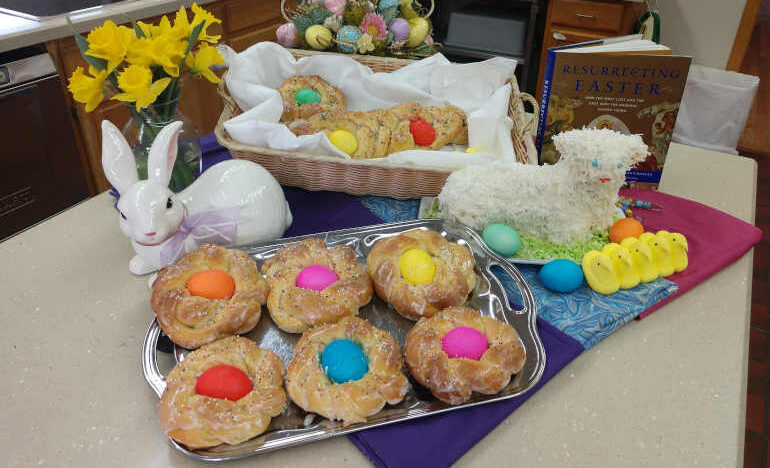From the Heart: Contemplative Communication — Part 2

By Kathy Keary
Part 2 of 2. Read Part 1 Here.
In our last article, the Circle was described as a tool that enables participants to speak and listen from the heart in a sacred and safe atmosphere promoting growth in compassion for others.
In this article, we will outline the format and ten essential elements of a Circle. Except where indicated, our reference for this article is Wisdom Circles: A Guide to Self-Discovery and Community Building in Small Groups by Charles Garfield, Cindy Spring, & Sedonia Cahill)
The format of a Circle is as follows:
- Welcome
- Honor Circle as sacred time and space
- Create safe space
- Call attributes into the Circle
- Facilitator poses questions that encourage a story to be told and emotions shared
- Closing ritual
Honor the Circle as Sacred Time and Space: A simple opening ritual is recommended that will begin connecting members of the Circle. It could include reciting a sacred text, listening to music or a guided meditation, or spending a few moments in silence.
Create a Collective Center: It’s helpful to place a low table or cloth in the center of the Circle and include objects that remind participants that they are gathered together in a sacred space. The group will be further bonded by questions asked by the facilitator that move a person inward to their center as they respond from a place deep within.
Call Attributes Into the Circle: Each person calls a quality into the Circle which they would like to see present such as compassion, joy, truth-telling, generosity, openness, or laughter. This calls everyone to their best self.
Create a Safe Place for Full Participation and Deep Truth-Telling: Set the below ground rules and ask participants if there are other guidelines that would increase their comfort level freeing them to truly share from the heart.
- Speak with respect only when you have the talking piece.
- Leave room for others to speak.
- Prayerfully listen with respect.
- Respect confidentiality: everything said in the Circle, stays in the Circle.
Designate a Guardian of the Circle: The guardian safeguards the Circle when needed by interrupting the group process to call everyone back to task or to respectful practices or suggesting a break. Even with the guardian in place, everyone shares the responsibility of safeguarding the Circle. (Taken from Calling the Circle: The First and Future Culture by Christina Baldwin)

Listen from the Heart: A talking piece teaches everyone to listen respectfully with full attention to the one with the talking piece. When we engage in prayerful listening, our inner voice is quieted – the voice that tends to evaluate, compare, disagree, and judge. We learn to listen intently as something could be said at any moment that is exactly what we need to hear. We collect the wisdom of each person made up of stories filled with emotions.
Silent witnessing allows the speaker to dig deeper and discover their unique journey. Added hope, strength, dignity, and sense of self-worth is gained when one feels they have been heard and understood.
Prayerful listening leads to the emptying of deeply held prejudices. We begin to see things through the eyes of another. We enter a new world that was previously inaccessible to us. Respectful listening is a fundamental step to communion with others.
Speak from the Heart and from Direct Experience: The very act of speaking is courageous because in sharing our story, we are revealed. In sharing from the heart, we do not rehearse our remarks or prepare what we intend to say. Our words become spontaneous. We may be surprised at what surfaces as we begin to trust the words that are born from a place deep within.
Community develops as we share a mutual openness and vulnerability. We become willing to discard obstacles that previously kept us from entering into communion with others. As we continue to speak from the heart, we begin hearing the deeper story we are trying to tell.
Make Room for Silence to Enter: Sitting in silence together allows us to feel our soul connections. More intuitive responses surface. Both the words and silence nourish us.
Empower Each Member to be a Co-facilitator of the Process: The facilitator is in charge of the physical environment, the opening and closing rituals, the questions that will be asked, and maintaining a safe, sacred, and respectful space. The task of facilitator can rotate or be divided.
Express Gratitude for Blessings or Teachings of Life: Giving thanks results in a positive feeling pervading the group. This can be done in numerous ways including each person expressing thanks individually or in the silence of their heart, the group offering thanksgiving for a specific gift, or one person speaking for the group. It makes for a meaningful closing ritual.
The Circle is a contemplative method of communication that is useful in any setting for an array of purposes such as healing, reconciliation, community building, conflict management, and bonding. I am available to facilitate a Circle in your setting or assist you as you implement a Circle in your family, work, or spiritual setting.
Note: New articles in this series are posted to the website every Monday. The full series can be found here: An Invitation to Something New: The Contemplative Life. On Thursday’s we’ll send an email to remind you of the articles.
Never miss an article published to the Renewal Center website: Sign up to receive our newsletters.
[Kathy Keary, a Precious Blood Companion and spiritual director, holds a master’s degree in theological studies and is a graduate of the Atchison Benedictine’s Sophia Center’s Souljourners Program, an intense study of spirituality and spiritual direction. Kathy believes that the divine is present and active in all of life and encourages others to be awakened to the God in all including the divine within. She enjoys accompanying others on their journey to wholeness discovering the person they were created to be.]
Related

Easter Bread (Pane di Pasqua)
By Lucia Ferrara
Easter bread is a fun bread. It’s a fun bread to make with your children, with your family, with neighbors and friends. The tradition of Easter bread dates back centuries and comes from many parts of the world.

Easter Sunday, the Resurrection of the Lord
Today’s scriptures tell us how three days changed the world. How have they changed you?
Categories
Assembling God's Puzzle Coffee with Padre Cooking & Spirituality Encounters of the 4th Kind Family Matters Reflections on the Eucharsitic Prayers Spiritual Resources Taize Prayers The Contemplative Life Traveling with Pilgrims of Hope Uncategorized Videos Week of Prayer for Uhristian Unity When you need a little help
